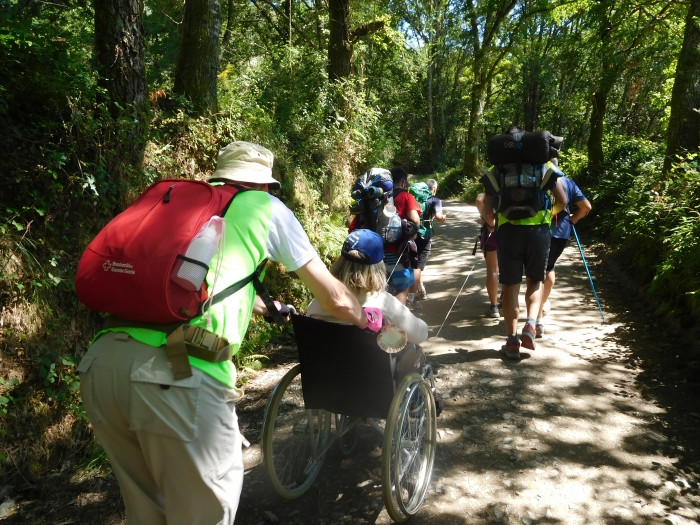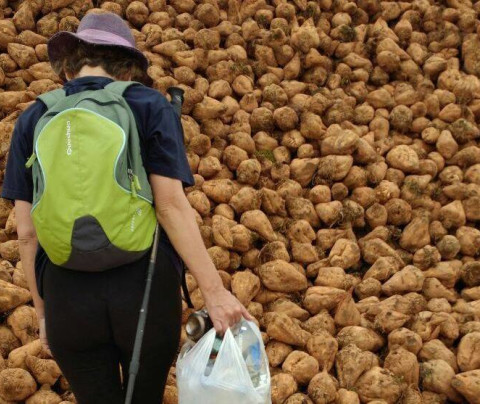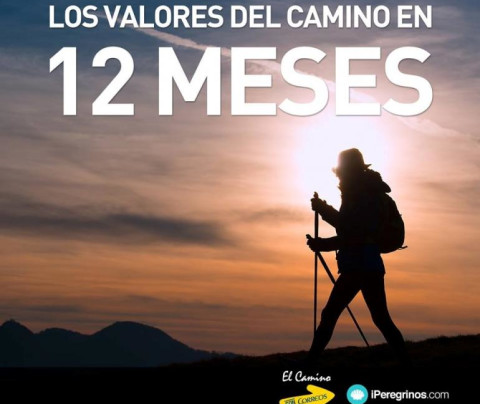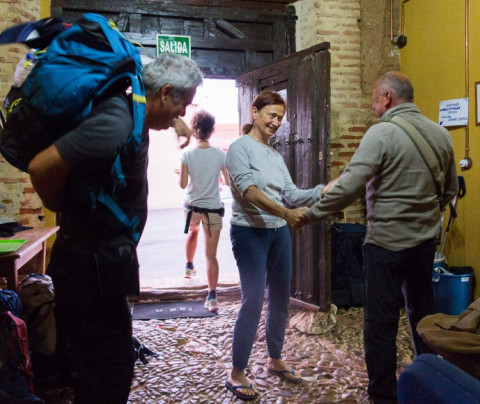The values of the Camino in 12 months
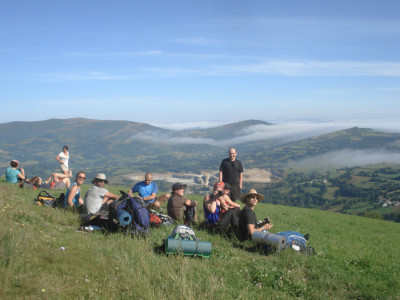
The Camino de Santiago is recognized as a pilgrimage rich in experiences and values. Beyond the mere act of walking or travelling, people traversing one of the different Jacobean routes agree on emphasizing the vital learning extracted from a pilgrimage.
This is what we wanted to highlight with the initiative The Values of the Camino in 12 months, promoted together with the iPeregrinos community. In the month of August, we're talking about integration, a value representative of the Camino: a route that equates people to the unique condition of pilgrims, fosters diversity, but also opens the doors to those who don't have access to many other areas or are at the risk of social exclusion. Integrating all of the people on the Camino is an objective in and of itself, but can also be a platform to visualize social causes. Achievements are smalls gestures to great works.
Support on the Camino
At the heart of the Camino is where you can perceive the atmosphere of solidarity. The impediments and obstacles characteristic of the Camino are, for many, impossible to overcome without help, but help is rarely lacking for pilgrims on their way to Santiago.
There are Caminos that seem utopian, but with the right support they become reality. Many persons with disabilities complete the Camino, helped by family or friends who help them overcome their barriers, and new companions are made along the way, lightening the proverbial and literal load.
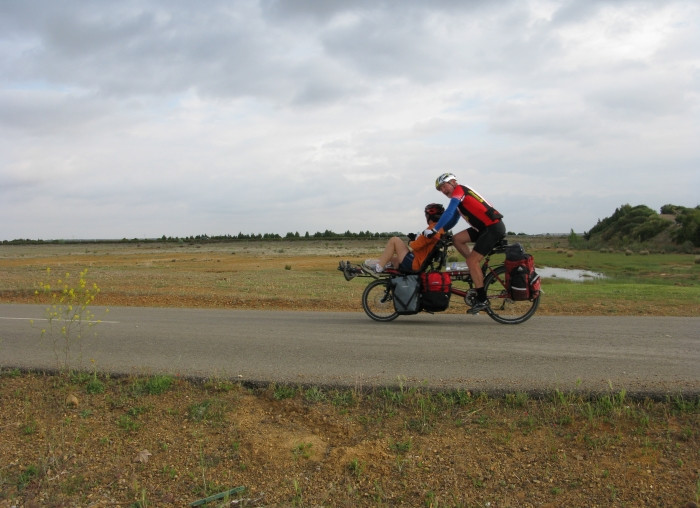
The right help can be an unconditional friend who moves with you, as in this picture of Alfons Tauler.
Several examples of this have already made it to our Camino de Santiago Photo Contest, giving us images of fellowship and brotherhood, creating a Camino that is more and more for everyone.
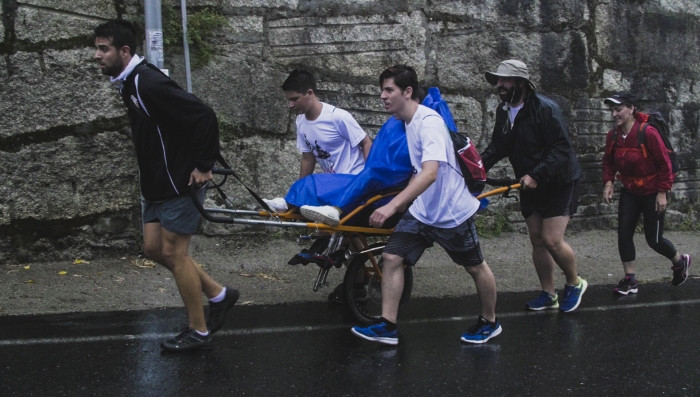
María Medina provides us with this image, in which 5 pilgrims help a person with limited mobility.
Collaboration and measures
One of the works realized on the Camino in favour of social integration is the Jacob@ccess Project, created in 2016 with the aim of guaranteeing accessibility to persons with physical disabilities of the heritage and culture of the territories that cross the Camino de Santiago from the French region of de Aquitania to Navarra, passing through Aragón.
The goal of this project is to cover the need of access to basic public services, creating 3 interpretation centres and a hostel accessible for 2019.
With this, it is expected that in the next year, 2018, an accessible pilgrims hostel will open in the centre of Atades Huesca de Martillué, which would have a floor level with space for 12 persons.
Eva Antón shows us in her photography the group sacrifice made, where all "reman" in a single direction
Reinsertion and equality
The Penitentiary Centre of Segovia has been working for more than a decade for the social integration of its inmates on the Camino de Santiago. In 2017, a group of inmates from the centre, along with staff, accompanied by the NGOs working in the social integration programs: Padre Garralda Foundation, Pastoral Penitenciaria and the Red Cross of Segovia, travelled the last 150 km of the Camino Francés from O Cebreiro to Compostela, with a final reception at the Concello of Santiago.
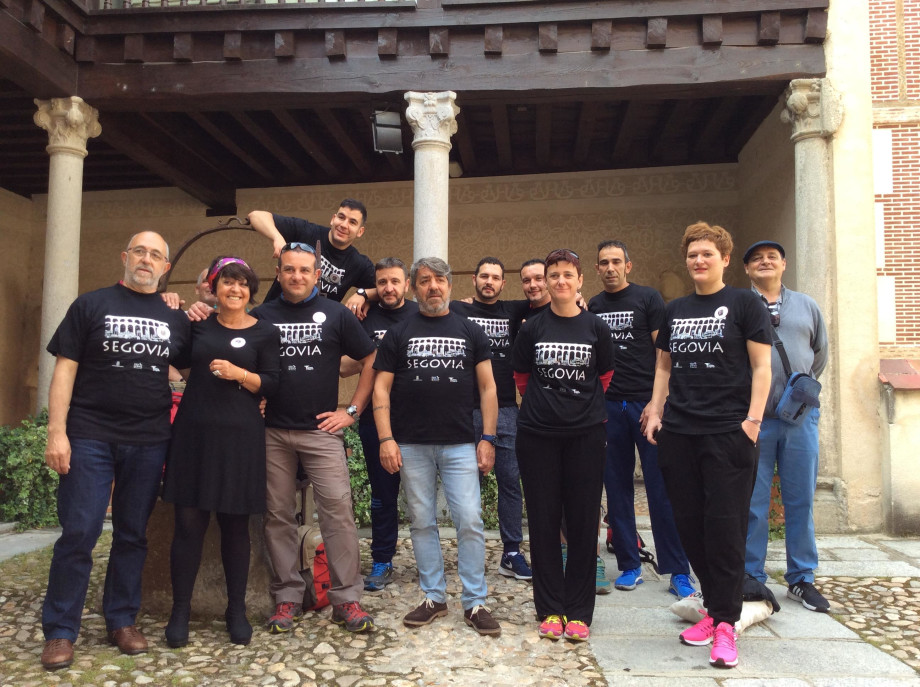
Pilgrims from the Penitentiary Centre of Segovia. Photo: www.turismodesegovia.com
These are just three of the many examples of integration that the Camino de Santiago provides us. Now we want to know your stories: have you experienced integration on the Camino? Tell us in the comments.
Safe travels to all!!!
Your email address will not be published.
Mandatory fields are marked with *




